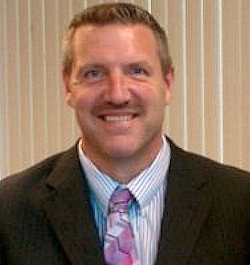
A new report, “Measures and Instruments for Quality Improvement in Assisted Living,” is designed to help assisted living communities maintain and improve quality and increase their value to aging Americans and entities in the healthcare system such as managed care organizations and accountable care organizations.
With funding from the Center for Excellence in Assisted Living, researchers at the University of North Carolina’s Cecil G. Sheps Center for Health Services Research and School of Social Work reviewed quality improvement measures and instruments available for assisted living, and because not many tools have been developed specifically for assisted living, they also reviewed tools used in other health and long-term care settings.
“They broke those into five domain areas,” CEAL Executive Director Randall G. Slikkers, whose appointment to the post was announced in May, told McKnight’s Senior Living. “They looked at person-centered care, medication management, care coordination and transition, resident/patient outcomes, and workforce.”
The researchers ultimately recommended 96 measures and instruments. As a follow-up effort, CEAL and UNC plan to use the report to develop a resource that will enable assisted living providers to choose and use the most appropriate tools for their organizations and purposes.
Four focus areas
Research is one of four areas of focus — the others being practice, technical expertise and public policy — that CEAL’s board members reaffirmed for the group at a July strategic planning meeting, Slikkers said. Their decision was based on the findings of a community needs assessment that included discussion, surveys and a symposium with stakeholders.
As another part of its research focus, the executive director said, CEAL has just begun a study of workforce issues, including recruitment and the effect of minimum wage increases on assisted living costs, and expects to have the results early next year.
Additional areas of research, Slikkers said, will be determined in part by CEAL’s new stakeholder group, which replaced its former advisory group of nonboard agency representatives. Members will meet quarterly via phone to share insights into assisted living trends and the topics that are important to them, and they also may meet in person in conjunction with major industry conferences.
The tools that come out of the various research projects fulfill the group’s practice goal.
“The transition from research into practice is the part that we’re really excited about,” he said, “because while those reports in and of themselves are wonderful tools, part of what came out of the strategic planning was just how much we want to take higher-level tools and bring them to the ground level so they can have a strong effect on the industry and quality.”
The organization will use its technical expertise to help providers use those tools, Slikkers added.
When it comes to public policy, he said, “We want to be able to always be educational to lawmakers and federal agencies about current issues. We want to be a resource for them as they move forward with their activity, and we always want to have the ability to connect them to our broader stakeholder groups and make sure that whatever decisions they’re making are decided based on what’s currently happening.”
One of CEAL’s unique strengths in this area, he said, is that its membership represents a diversity of perspective on the issues facing the industry. The organization’s members include the AARP, the Alzheimer’s Association, the American Assisted Living Nurses Association, the American Seniors Housing Association, Argentum, LeadingAge, the National Center for Assisted Living, The National Cooperative Bank, Paralyzed Veterans of America and the Pioneer Network.
“We’re giving them a group that represents consumers, represents providers, represents specialty groups,” Slikkers said. “We’ll continue to be that resource for policymakers and for other federal agencies that deal with assisted living.”
CEAL, he said, has been serving as a resource to the Centers for Medicare & Medicaid Services as it provides additional guidance to states developing transition plans and determining whether certain senior living settings qualify to provide home- and community-based services in response to a 2014 final rule issued by the agency.
“They asked us to provide them with comments, and we did that,” Slikkers said. “Then we had calls with them to talk about the comments and specific examples. They really loved that and then asked us to do some follow-up with a little bit more specificity, so we’ve been working really closely with them. That has been a very positive activity for us to be able to take on and go to the next level.”
Passion is the draw
Slikkers, who specializes in strategic planning and execution, advocacy and public policy, and board development, said the passion of those involved with CEAL drew him to the position.
“It was that ability to do what I love, do what I have a strong skill set for and do it for a population that really needs it, with a group of people who are passionate about it,” he said. “When all those factors lined up, it made it a pretty easy decision for me that this is where I wanted to go.”
Slikkers’ résumé includes three decades of leadership positions in the nonprofit sector, working with organizations such as Goodwill Industries; the Consortium of Americans for Native American Rehabilitation, which represents American Indians and Alaska natives who have disabilities and live on or near reservations; and a sister organization, the National Center for American Indians with Disabilities, which is concerned with issues such as aging, assisted living, independent living, mobility and transportation.



